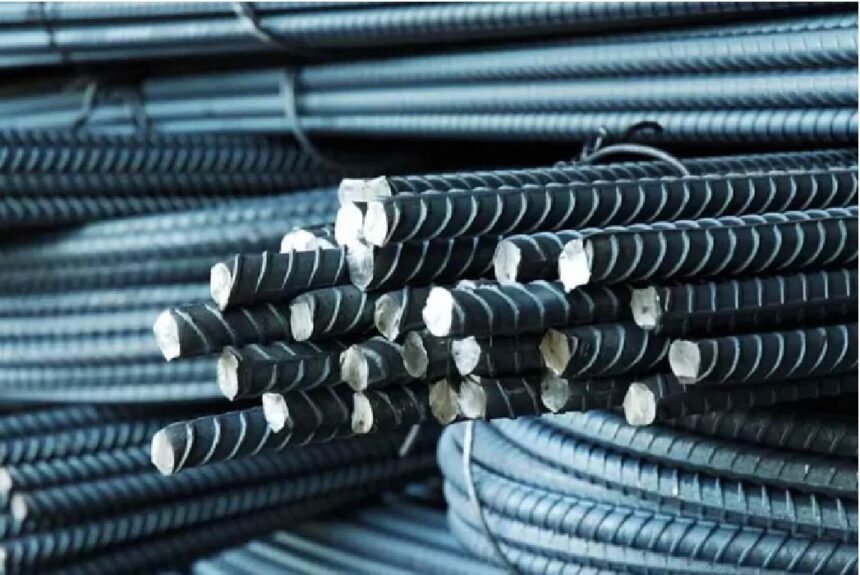Metals estimating is crucial for keeping construction, manufacturing, and industrial projects within budget and on time. Whether it is structural steel, rebar, or piping, accurate estimates are key to project success. Studies explained that 80% of construction delays are due to poor estimating, which leads to costly overruns.
As projects become more complex, the demand for faster yet accurate estimates continues to grow. Clients want quick results without compromising quality. In 2019, a McKinsey study identified that inefficient estimating restrains productivity within the construction industry.
This blog includes useful insights and tools that can assist you in streamlining the metals estimating process, making it more compact and quicker, and supporting project timetables and budget objectives.
What Is Metals Estimating?
Metals estimating denotes the process used to quantify the material, labor, and additional expenses for projects that need metal parts. Estimators predict the amount and prices of materials needed, the specific metals to use, and the cost of employee labor during fabrication, welding, and installation operations.
In-depth and accurate estimating requires:
- Quantity Takeoff: Precise identification of material types, sizes, and quantities.
- Material Pricing: Accurate cost assessments based on market conditions, vendor quotes, and material types.
- Labor Costs: Estimating time, skill sets, and workforce requirements for fabrication and installation.
- Waste and Contingencies: Correctly factoring in waste generation and unforeseen issues.
Industry-standard methods and software tools are crucial in estimating metals faster and more accurately.
Why Speed and Accuracy Matter in Metals Estimating
In the competitive world of construction and manufacturing, being able to deliver fast, reliable estimates is vital. Here’s why:
- Accurate Budgeting: Inaccurate estimates can result in either overpricing or underpricing, which directly impacts profitability.
- Client Relationships: Clients build trust with the company when estimates are delivered efficiently and precisely, which they use to arrange their budgets and schedules.
- Timely Decision-Making: A rapid turnaround for estimates permits businesses to respond efficiently, thereby improving their position in the contract acquisition process.
Accurate estimates reduce risks, prevent delays, and ensure that metal projects are completed within their budgets. When done right, metals estimating can improve project efficiency and overall success.
Common Challenges in Metals Estimating
In order to address strategies for the improvement of metals estimating speed and accuracy, one needs to identify the major booby traps that prevent the process and cause inaccuracies:
- Complex Drawings and Specifications: Due to the complexity of metal-based jobs, the intricacy and sheer number of components often render it infeasible to extract all necessary information for takeoffs.
- Frequent Design Changes: Design changes are common in project work, leading to changes in material requirements, measurements, and expenditure levels.
- Manual Takeoff Errors: Manual takeoff errors may lead to ignoring some parts, wrong counts, or wrong calculations, all of which possibly affect the overall accuracy of estimates.
- Inconsistent Supplier Pricing: Fluctuating market trends, supply chain issues, and random pricing strategies from suppliers make it difficult to lock in steady metals costs.
- Labor Rate Variations: Labor costs can vary widely according to the region, the skill level of labor, and the level of complexity experienced in a project. When labor costs aren’t adequately estimated, they can result in huge variances between budget and actual spending.
- Waste and Scrap Calculation: Predicting wasted material arising from fabrication and installation is often challenging, especially when metals are at greater risk for such losses during these processes.
Luckily, several methods and technologies are available that can help make the metals estimating process simpler and quicker.
Proven Ways to Make Metals Estimating Faster
Discover how to speed up metals estimating, boosting efficiency and accuracy to ensure quicker, more reliable project timelines
1. Use Estimating Software
Estimating software like PlanSwift or Bluebeam can automate time-consuming tasks:
-
Automatic Takeoffs: Measure quantities directly from digital plans.
-
Pre-made Templates: Use templates for common materials to save time.
-
Team Collaboration: Work together in real time with cloud-based tools.
These tools help you to create estimates much faster without sacrificing accuracy.
2. Create Reusable Templates
If your projects often use the same materials or components, create templates. This way, you won’t have to redo calculations for every project.
Tip: Build a library of common metal types, sizes, and quantities for easy reuse.
3. Use Digital Plans for On-Screen Takeoffs
Switch from paper drawings to digital plans for faster and more accurate measurements. Using on-screen takeoff tools reduces errors and saves time.
How to Improve Accuracy in Metals Estimating
Speed is essential, but accuracy should never be compromised. Here are some ways to ensure your metals estimates are as accurate as possible:
1. Double-Check Dimensions and Quantities
Always verify measurements and quantities to ensure they match the original plans. Even with software, human errors can occur, so a second check is essential.
2. Account for Waste and Scrap
Metal projects often create waste (cutting, welding). Add a waste factor (usually 5%-10%) to account for this.
Tip: Waste percentages can vary depending on the metal, so adjust accordingly.
3. Estimate Labor Costs Carefully
Labor costs can vary depending on worker skill and project size. Be sure to factor in the right number of workers and the time required for tasks like welding or installation.
4. Collaborate with Suppliers for Pricing
Metal prices can fluctuate. Stay updated by working with suppliers to get the most accurate pricing for your materials.
Build a Standard Estimating Checklist
Creating a standard metal estimating checklist can help ensure you don’t overlook any details during the process. A checklist ensures that you’ve:
- Reviewed all drawings and specifications
- Completed the quantity takeoff for all materials
- Verified pricing for materials and labor
- Factored in waste and contingencies
- Finalized the project’s labor costs and schedules
Standardizing a checklist helps catch mistakes and speed up the review of estimates. With a checklist, you can check and solve each aspect of the project to achieve a complete and accurate final estimate.
Train Your Estimators Regularly
The proficiency level and technical expertise of your estimators are directly proportional to the quality and speed of your metals estimating results. By constant training in new software, material pricing, and industry updates, your estimators will stay updated and be able to perform their work effectively.
Encourage your estimators to attend workshops, webinars, and conferences to stay ahead of the curve. A team that is fully trained is a key factor in maintaining both accuracy and speed in your estimates.
Consider Outsourcing to Professional Estimators
If your in-house team is struggling with deadline management or accuracy, perhaps it’s time to entrust your metals estimating needs to experts. Experts in metals estimating add massive experience to your project, allowing you to minimize errors and increase the efficiency of your prescriptions.
Outsourcing can also be cost-effective. By outsourcing on a need-only basis, you can free your team to focus on core duties while specialists do the estimating work.
FAQs
1. What is metals estimating, and why is accuracy important?
Metals estimating is the practice of calculating the necessary metal materials, their prices, and the amounts required for project construction. Accurate estimates are key to preventing waste, undercharging, and supply shortages.
2. What types of problems do professionals face when performing metal estimating?
Challenges include inconsistent takeoff measurements, changes in metal prices, manual errors, lack of standardized processes, and outdated project data.
3. How can software tools improve the speed of metal estimates?
Estimation software automates takeoffs, reduces manual input, updates material costs in real time, and creates detailed reports quickly, cutting down on work hours.
4. What features should I look for in metals estimating software?
Look for digital takeoff tools, integration with pricing databases, customizable templates, real-time collaboration, and compatibility with CAD/PDF files.
5. How can digital takeoff tools enhance estimating accuracy?
Digital takeoffs eliminate human measurement error by using precise scale calibration and overlay tools, ensuring exact quantities and dimensions.
Conclusion
Making metals estimating faster and more accurate requires the right combination of tools, processes, and best practices. Coupling the use of advanced software, developing effective templates, and enforcing consistency allows your estimating process to become faster and more accurate.
In addition, counting quantities twice, setting aside enough for waste, and communicating with suppliers will reduce your chances of costly mistakes. With the improvements, your estimates are completed more quickly and with greater accuracy, which supports your ability to compete and finish the projects as planned.
If you’re looking to improve your metals estimating process, consider working with professionals who specialize in this area. With the right approach, you can boost your estimating efficiency and accuracy, giving you the edge in the competitive construction and manufacturing industry.
For More Information Visit Timelymagzine








